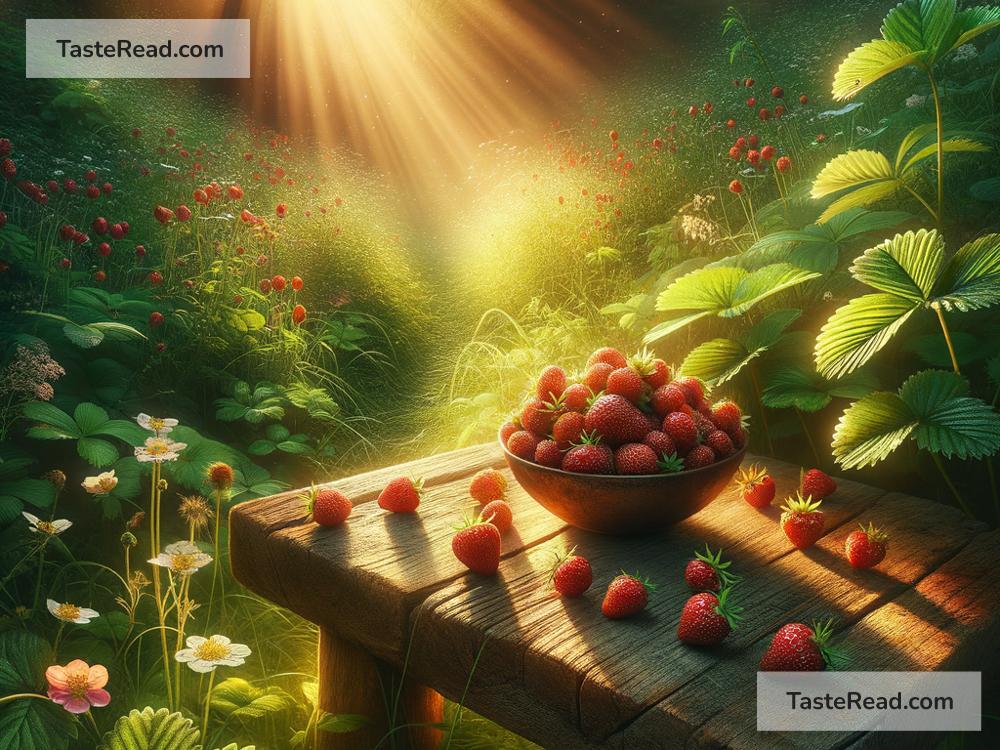The Mythical Connection Between Strawberries and Hope
Throughout history, fruits and plants have often been associated with symbolic meanings, myths, and emotions. Apples are linked to temptation, peaches to immortality, and olives to peace. Among these fascinating associations, one fruit stands out for its delicate beauty and mythical symbolism: the strawberry. This sweet red berry has been cherished not only for its taste but also for its deeper, often overlooked connection with hope.
In simple terms, strawberries have come to symbolize fresh beginnings, positivity, and resilience. Their mythical connection with hope can be traced through stories, folklore, and their unique characteristics. Let’s explore how strawberries embody hope and why they continue to inspire people all around the world.
The Shape of Hope: Strawberries and Their Heart
One of the first things we notice about strawberries is their shape—a plump, red fruit resembling a little heart. This natural resemblance has made these berries a symbol of love, kindness, and renewal. In many cultures, the heart is not only a symbol of affection but also a representation of hope, as it beats on relentlessly no matter the challenges we face.
Strawberries bloom and thrive in conditions that speak to their resilience. After harsh winters or tough growing seasons, they emerge from the soil, producing vibrant red fruit that stands out against the green leaves. Just as hope springs up even in the darkest of times, strawberries remind us that life is capable of regeneration, even after adversity.
Ancient Folklore and Hopeful Legends
There are countless myths involving strawberries, many of which tie the fruit to hope and spirituality. For example, in Roman mythology, strawberries were considered sacred to Venus, the goddess of love and beauty. Legend has it that when Venus shed tears for a lost lover, her tears fell to earth and transformed into heart-shaped strawberries. Here, the strawberry represents hope in the face of sorrow—a sweet reminder that even heartache can lead to growth and renewal.
Christian religious symbolism also highlights strawberries as carrying a joyful promise. In medieval art, strawberries were depicted in paintings and carvings as symbols of righteousness and humility, often appearing alongside the Virgin Mary or saints. The red color of the fruit was thought to signify purity and faith, while its sweetness was seen as a representation of God’s blessings. Such associations made strawberries symbols of hope for better times and divine guidance.
Nature’s Reminder of Resilience
Hope is deeply tied to the idea of resilience—the ability to bounce back from hardships—and strawberries embody this trait beautifully. Unlike many fragile fruits that are easily bruised and spoiled, strawberries grow low to the ground, where they face greater challenges—harsh weather, pests, or inadequate soil. Yet, despite these obstacles, they continue to bloom and produce delicious fruit. This tenacity mirrors the human spirit, which strives even in adversity.
Strawberries also flourish in environments that allow their sweetness to develop slowly. To many, this is a metaphor for resilience over time. Just as strawberries need patience and care to ripen, hope often requires nurturing and persistence to thrive. We are reminded that the best things in life—whether fruits or dreams—often take time to mature.
A Sweet Symbol in Festivals and Traditions
Over the years, strawberries have also found their way into festivals, traditions, and celebrations as a symbol of joy and hope. In parts of Europe, strawberry festivals mark the beginning of summer and the harvest season. These festivals are a celebration of renewal, warmth, and brighter days ahead.
In Sweden, during the joyful holiday of Midsummer, strawberries are an important part of the feast. People gather together outdoors, eat strawberry desserts, and celebrate the longest day of the year. The presence of strawberries is a nod to sweeter days to come after a long, cold winter.
Similarly, in Japan, strawberries are often associated with prosperity and celebration, appearing in festive cakes and confectionery. Their bright appearance and sweet flavor remind people of hopeful moments shared with loved ones and the happiness of spring.
Why Strawberries Inspire Us
When you think about strawberries, it’s easy to focus purely on their delicious taste and vibrant color. But their symbolism runs much deeper. Strawberries represent hope because they show up in unexpected ways—after harsh winters, against challenging odds, and in cultures that celebrate their beauty. Their heart-like shape connects us to love, kindness, and emotional resilience, even in tough times.
We can also look at strawberries as reminders that small and simple things in life can hold great meaning. They teach us that hope doesn’t always have to come in grand gestures. Sometimes, it’s found in a quiet gesture—a smile, a kind word—or even a berry picked from the garden.
Conclusion
Strawberries are much more than a delicious fruit; they are symbols of hope, resilience, and renewal. Their mythical and historical significance tie them to love, positivity, and brighter days ahead. Whether they remind us of Venus’s tears or humble beginnings in the soil, strawberries inspire us to keep moving forward, no matter what comes our way.
So the next time you enjoy a strawberry, take a moment to think about its deeper meaning. Let it remind you of life’s capacity to regenerate, the sweetness of hope, and the quiet beauty of resilience. Like the strawberry, even in adversity, we can grow, thrive, and become something truly meaningful.


